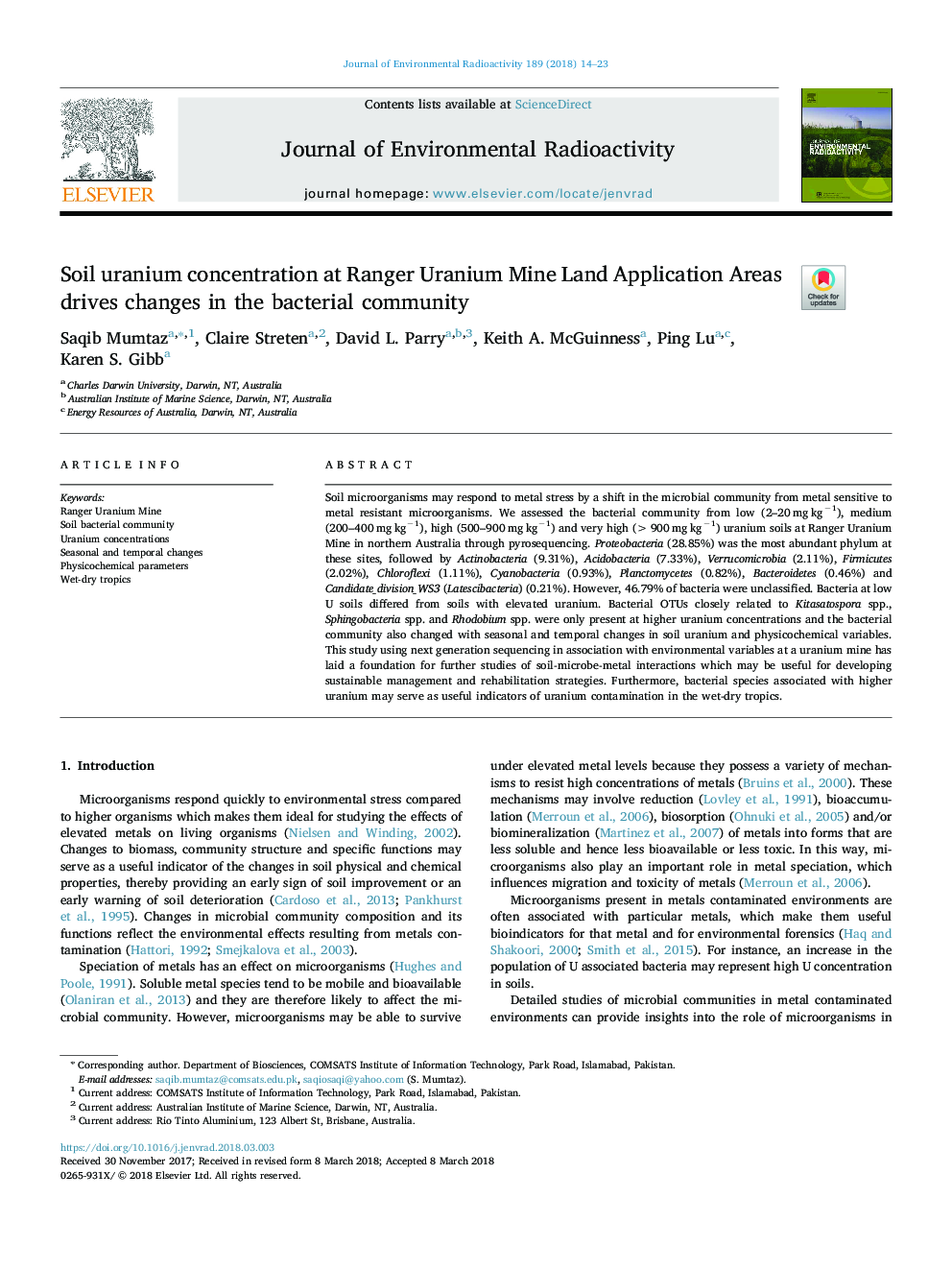| Article ID | Journal | Published Year | Pages | File Type |
|---|---|---|---|---|
| 8080466 | Journal of Environmental Radioactivity | 2018 | 10 Pages |
Abstract
Soil microorganisms may respond to metal stress by a shift in the microbial community from metal sensitive to metal resistant microorganisms. We assessed the bacterial community from low (2-20â¯mgâ¯kgâ1), medium (200-400â¯mgâ¯kgâ1), high (500-900â¯mgâ¯kgâ1) and very high (>900â¯mgâ¯kgâ1) uranium soils at Ranger Uranium Mine in northern Australia through pyrosequencing. Proteobacteria (28.85%) was the most abundant phylum at these sites, followed by Actinobacteria (9.31%), Acidobacteria (7.33%), Verrucomicrobia (2.11%), Firmicutes (2.02%), Chloroflexi (1.11%), Cyanobacteria (0.93%), Planctomycetes (0.82%), Bacteroidetes (0.46%) and Candidate_division_WS3 (Latescibacteria) (0.21%). However, 46.79% of bacteria were unclassified. Bacteria at low U soils differed from soils with elevated uranium. Bacterial OTUs closely related to Kitasatospora spp., Sphingobacteria spp. and Rhodobium spp. were only present at higher uranium concentrations and the bacterial community also changed with seasonal and temporal changes in soil uranium and physicochemical variables. This study using next generation sequencing in association with environmental variables at a uranium mine has laid a foundation for further studies of soil-microbe-metal interactions which may be useful for developing sustainable management and rehabilitation strategies. Furthermore, bacterial species associated with higher uranium may serve as useful indicators of uranium contamination in the wet-dry tropics.
Related Topics
Physical Sciences and Engineering
Energy
Nuclear Energy and Engineering
Authors
Saqib Mumtaz, Claire Streten, David L. Parry, Keith A. McGuinness, Ping Lu, Karen S. Gibb,
